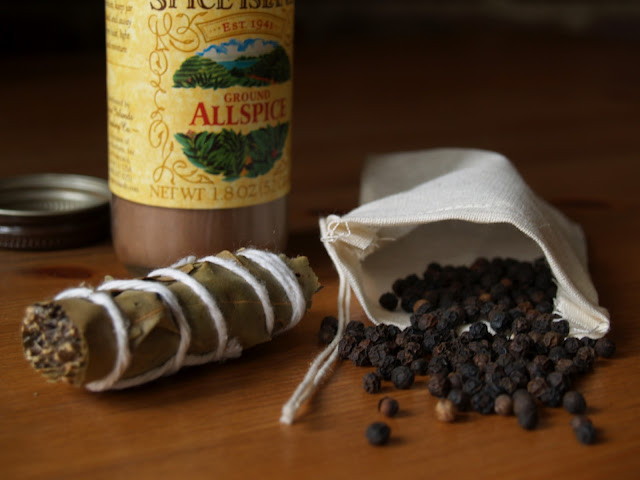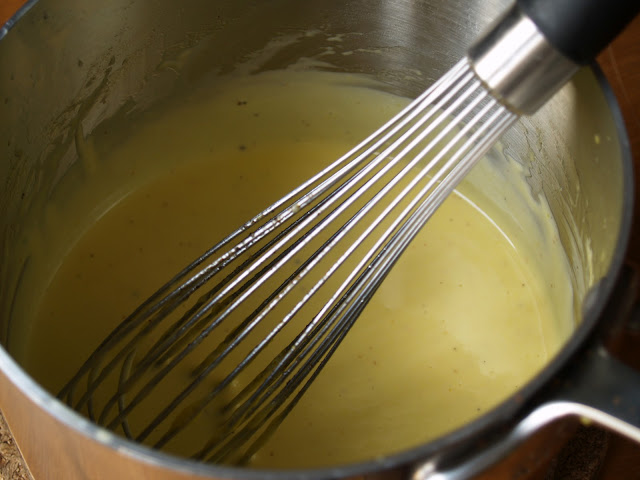Though corned beef and cabbage has become synonymous with Ireland and St. Patrick's Day, there are many discrepancies over the origins of the dish and its roots in native Irish cuisine. The practice of curing meats was a necessity in old world Europe as a means to safely preserve meats. In Ireland, beef would have been considered an expensive luxury item, but for Irish immigrants in the U.S., corned beef was cheap. It is thought that Irish immigrants living in New York City bought corned beef from Jewish butchers and adapted it to their cuisine. Today, it is by far the meal of choice eaten by Irish American families (or those wishing to be Irish for a day) in the U.S. on St. Patrick's Day.
I remember many a St. Patrick's Day my dad would take my family out to get corned beef and cabbage (in retrospect, I think he was the only one who ate it). I was too little to understand what it was and thought it was something old people ate. Little did I know how good it could be! Of course, corning it yourself is incomparable to the pre-corned beef you can buy at the store. After all, half the fun comes from corning it yourself. Aaron and I had friends over the other night to celebrate a very belated St. Patrick's Day. Guinness, Irish whiskey, and car-bombs abound! The corned beef and cabbage wasn't too bad either.
CORNED
BEEF & CABBAGE
Adapted
from Joy of Cooking & an Alton Brown recipe
Ingredients:
4-5
lbs. brined corned beef brisket (see recipe here)
1 tbsp.
whole black peppercorns
1 tsp.
ground allspice
2 tsp.
kosher salt
2 bay
leaves or 1 bouquet garni
1 head
green cabbage, chopped into 1-inch pieces (remove heart prior to chopping)
2
bunches of carrots, cut into ½-inch slices (about 1 lb.)
2 yellow
onions, roughly chopped
Spice
bag or cheesecloth
Thoroughly
rinse the brisket in cold water to remove the brine. Place the brisket in a
large stockpot or Dutch oven and pour in enough water to cover the brisket by 1
inch (about 3 quarts). Place the peppercorns and bay leaves (or bouquet
garni) in a small spice bag and add to the pot along with the allspice and
salt. Bring to a boil and then reduce heat to a simmer and cover
pot. Cook for approximately 45 minutes per pound, about 3 to 4 hours or
until a fork can easily penetrate to the center of the brisket.
20
minutes prior to the brisket being done, add the carrots and onions to the pot
and cover again. After 10 minutes, add the cabbage and let cook for
another 10 to 15 minutes. Remove the brisket and cover loosely with foil.
Drain the carrots, onions, and cabbage through a colander, discarding cooking
liquid. Discard the spice bag and transfer the vegetables to a medium
sized bowl and cover with foil to keep warm. Allow the meat to rest for 10
to 15 minutes prior to cutting. Slice the meat against the grain into thin
slices. Arrange the corned beef and vegetables on a platter. Serve with
boiled potatoes.
Notes:
- Feel free to add potatoes to the pot with the carrots and onions.
- By cooking the vegetables in the brisket liquid, they will absorb its incredibly flavorful broth. You can serve the corned beef with the vegetables and broth as a stew, or drain and separate them as I've done above. If making a stew, remove the brisket and chop it into 1-inch pieces and return it to the pot prior to serving.
















































